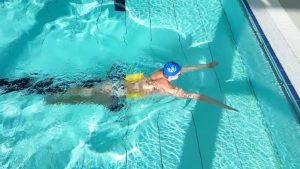Receiving stitches is a common procedure following minor surgeries or to close wounds. One of the critical considerations after getting stitches is understanding when it's safe to resume activities, especially swimming. This guide delves into the details, ensuring you have all the information needed to make informed decisions about swimming post-stitching.
Understanding the Healing Process
The healing process after receiving stitches varies depending on the wound's location, depth, and individual health factors. Typically, stitches on the skin surface take about 7 to 10 days to heal sufficiently. Deeper stitches, such as those for surgical incisions, might require up to two weeks or more.
Factors Influencing Healing Time
- Wound Location: Stitches on areas that experience frequent movement, such as joints, might take longer to heal.
- Individual Health: People with underlying health conditions like diabetes or immune deficiencies may experience slower healing times.
- Wound Care: Proper care, including keeping the wound clean and dry, significantly impacts healing speed.
Swimming with Stitches
Swimming after receiving stitches poses several risks, including infection and delayed healing. It's crucial to wait until your healthcare provider approves swimming activities. The general advice is to avoid swimming until the stitches are removed or fully dissolved if they are absorbable. This period can range from 7 to 14 days for superficial stitches and longer for deeper ones.
Risks of Swimming Too Soon
- Infection: Pools, oceans, and lakes contain bacteria that can cause infections in open wounds.
- Delayed Healing: Water can weaken the wound and the surrounding skin, potentially leading to reopened wounds.
Recommendations for Safe Swimming
Once your doctor confirms that your wound has healed enough and it's safe to swim, consider the following precautions to protect your skin and stitches:
- Cover the Wound: Use a waterproof wound sealant or bandage to cover the wound while swimming.
- Short Swimming Sessions: Limit your time in the water to reduce the risk of the bandage peeling off or the wound getting wet.
- Monitor for Infections: After swimming, carefully dry the area and check for signs of infections, such as redness, swelling, or pus.
For more detailed information on whether you can swim with stitches, consider visiting this link.

Conclusion
Waiting to swim after receiving stitches is crucial for proper wound healing and avoiding complications. Always follow your healthcare provider's advice on the appropriate waiting period, which can vary based on the wound's severity and your overall health. Taking the right precautions before diving back into swimming activities ensures a safer and quicker recovery.
